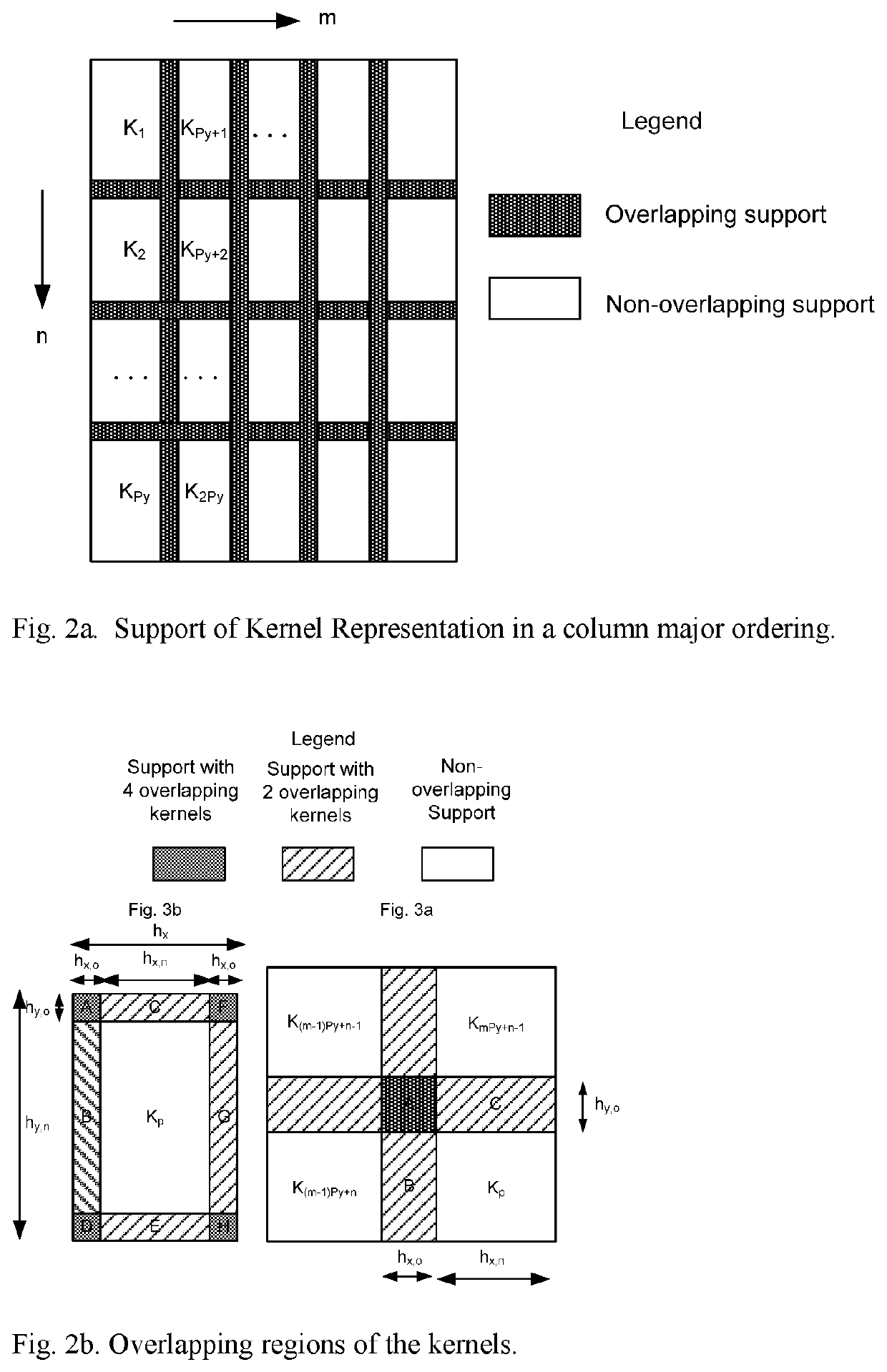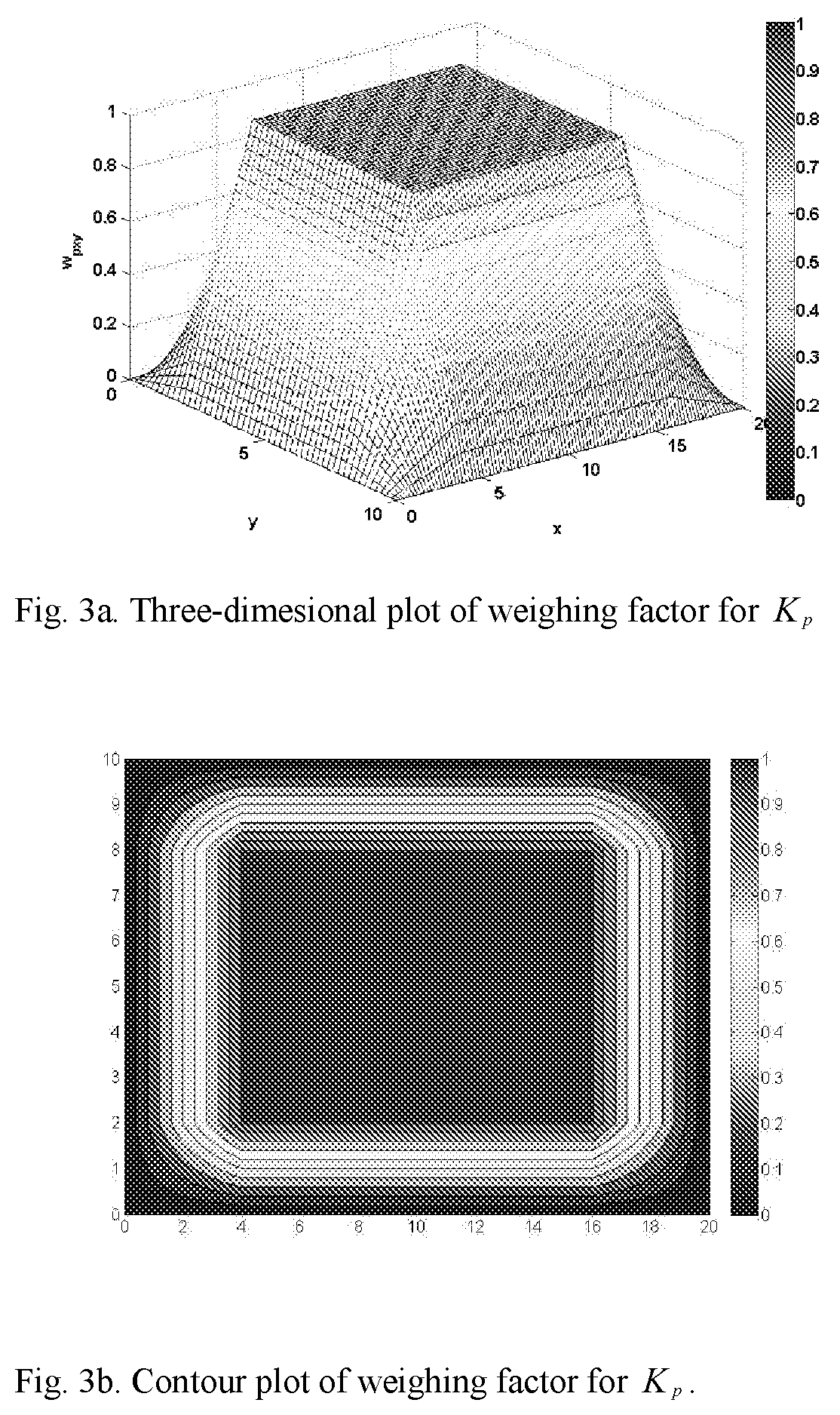Multi-overlay variable support and order kernel-based representation for image deformation and view synthesis
a multi-overlay variable and image deformation technology, applied in the field of image deformation information representation in the formation, transmission and storage of three-dimensional images, can solve the problems of image-domain warping methods that cannot handle semi-transparent and reflective objects, and conventional images and videos that do not support changes of viewpoints, etc., to achieve the effect of reducing the storage size of image deformation
- Summary
- Abstract
- Description
- Claims
- Application Information
AI Technical Summary
Benefits of technology
Problems solved by technology
Method used
Image
Examples
Embodiment Construction
[0031]Mathematical Foundation
[0032]Consider a pixel i(x,y) of an image I with resolution M×N, where M is the number of pixel columns (width) and N is the number of pixel rows (height). x=1, 2, . . . M and y=1, 2, . . . N are the x and y coordinates of the pixel. Conventionally, the image deformation of each pixel i(x,y) can be represented as a displacement denoted by d(x,y). They can be re-written in the matrix form
D=[d1,d2, . . . ,dM], where dx=[d(x,1),d(x,2), . . . ,d(x,N)]T. (1)
[0033]In view synthesis, the positions of the original pixel i(x,y) in the V views are computed. The new position at the v-th view is iv(x,y), where v=1, 2, . . . , V. In the conventional representation of, the relationship of iv(x,y) and i(x,y) is given as
iv(x,y)=ϕ(x,y,v)=ϕ(i(x,y),d(x,y),v), (2)
where ϕ(⋅) is a synthesis function that modifies the position of i(x,y) to synthesize the v-th view of I. See the Stefanoski article and the article Kauff et al., “Depth map creation and image-based rendering for...
PUM
 Login to View More
Login to View More Abstract
Description
Claims
Application Information
 Login to View More
Login to View More - R&D
- Intellectual Property
- Life Sciences
- Materials
- Tech Scout
- Unparalleled Data Quality
- Higher Quality Content
- 60% Fewer Hallucinations
Browse by: Latest US Patents, China's latest patents, Technical Efficacy Thesaurus, Application Domain, Technology Topic, Popular Technical Reports.
© 2025 PatSnap. All rights reserved.Legal|Privacy policy|Modern Slavery Act Transparency Statement|Sitemap|About US| Contact US: help@patsnap.com



